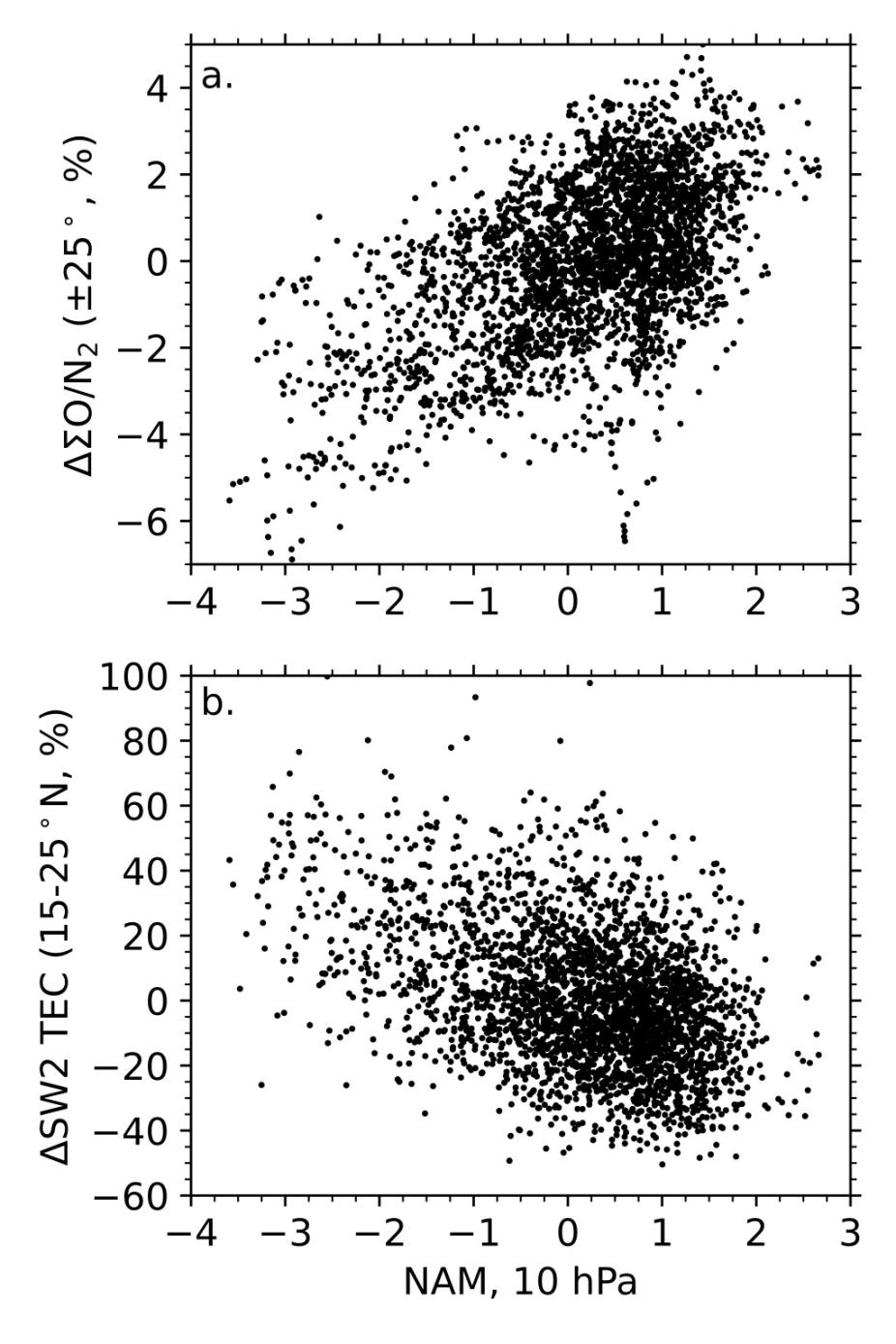
WACCM-X daily column integrated O/N2 anomaly between +/- 25 degrees geographic latitude versus the Northern Annular Mode (NAM) at 10 hPa with a lag of eight days. (b) SW2 amplitude anomaly in TEC between 15-25N geomagnetic latitude versus the NAM at 10 hPa with a lag of four days. Results are based on the time period December 15 to March 1.
Journal of Geophysical Research: The Whole Atmosphere Community Climate Model with thermosphere-ionosphere eXtension (WACCM-X) is used to investigate the influence of stratosphere polar vortex variability on the mesosphere, thermosphere, and ionosphere during Northern Hemisphere winter. Based on 40 simulated Northern Hemisphere winters, the mesosphere and lower thermosphere (MLT) residual circulation is found to depend on whether the stratosphere polar vortex is strong or weak. In particular, during weak stratosphere polar vortex time periods, the MLT circulation anomalies are characterized by clockwise and anti-clockwise flow in the Northern and Southern Hemispheres, respectively. Opposite, though weaker, anomalies are found to occur during time periods when the stratosphere polar vortex is strong. The MLT circulation anomalies influence the composition of the lower thermosphere, leading to +/-5% changes in the thermosphere column integrated atomic oxygen to molecular nitrogen ratio (O/N2). Large differences between strong and weak stratosphere polar vortex events are also found to occur in the semidiurnal migrating tide (SW2) in the MLT, which leads to +/- 15-20% differences in the SW2 component of the ionosphere total electron content (TEC) at low latitudes. The WACCM-X simulation results indicate that variability in the stratosphere polar vortex can explain ~30% and ~18 of the quiet time variability in thermosphere O/N2 and the SW2 component of TEC during Northern Hemisphere winter, respectively.